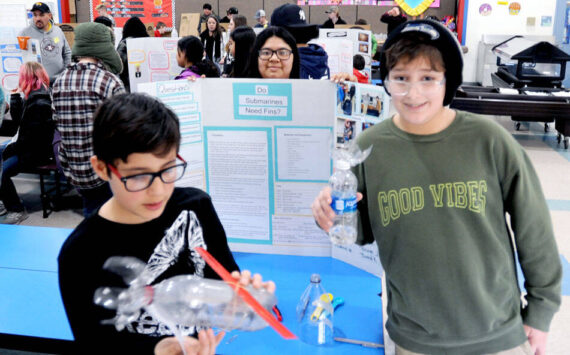Dear Editor,
Mr. Slusher, in response to“The Bells still tolls, let me first say I in no way was“desperately laying down a litany of excuses for our international test scores, and what you refer to as our“declining education system.” I was pointing out why the American Education Systems is among the best in spite of the fact that 22% of the students in the United States live at or below the Poverty Level.
“More than 16 million children in the United States – 22% of all children – live in families with incomes below the federal poverty level” http://www.nccp.org/topics/childpoverty.html
The great myth perpetrated by Arne Duncan and the Department of Education that once our nation led the world on international tests, but we have fallen from that exalted position in recent years. Despite Secretary Duncan’s calculated effort to whip up national hysteria about our standing in the international league tables, the truth is the U.S. has never been first in the world, not even near the top, on international tests. Over the past 50 years, our students have typically scored at or near the median, or even in the bottom quartile. International testing began in 1964s with a test of mathematics. The First International Mathematics Study tested 13-year-olds and high-school seniors in 12 nations. American 13-year-olds scores significantly lower than students in nine other countries and ahead of students in only one. On a test given only to students currently enrolled in a math class, the U.S. students scored last, behind those in the 11 other nations. On a test given to seniors not currently enrolled in a math class, the U.S. students again scored last. In the article American Schools Are Better Than 50 Years Ago written by Kevin Drum
| Mon Feb. 14, 2011 he shows a chart with figures from Brookings Institution scholar Tom Loveless which show how American kids have done on international math tests compared to kids from eleven other advanced countries. His numbers show how American students compared to the average of the entire dozen countries. In 1964, we were 0.35 standard deviations below the mean. In the most recent tests, we were only 0.06 and 0.18 standard deviations below the mean. In other words, our performance has improved. There has been no sharp decline—in either the short or long run. The United States performance on PISA (Program for International Student Assessment) Tesst has been flat to slightly up since the test’s inception, and it has improved on Trends in Mathematics and Science Study (TIMSS) since 1995.
Yes we’re still below average among these dozen countries, so this is hardly anything to crow about, but we aren’t doing any worse than we did in the supposed glory days of the 50s and 60s. We’re doing better. And as people like Jay Mathews of the Washington Post points out, “If we have managed to be the world’s most powerful country, politically, economically and militarily, for the last 47 years despite our less than impressive math and science scores, maybe that flaw is not as important as film documentaries and political party platforms claim. And if, after so many decades of being shown up by much of the rest of the developed world, we are improving, it might be time to be more supportive of what we already doing to fix our schools.”
There’s an interesting article by Keith Baker, called “Are International Tests Worth Anything?,” published by Phi Delta Kappan in October 2007, which sheds light on the meaning of these test an America’s future. Baker, who worked for many years as a researcher at the U.S. Department of Education, had the idea to investigate what happened to the 12 nations that took the First International Mathematics test in 1964. He looked at the per capita gross domestic product of those nations and found that “the higher a nation’s test score 40 years ago, the worse its economic performance on this measure of national wealth – just the opposite of what the Chicken Littles raising the alarm over the poor test scores of U.S. children claimed would happen.” He found no relationship between a nation’s economic productivity and its test scores. Nor did the test scores bear any relationship to quality of life or democratic institutions. And when it came to creativity, the U.S. “clobbered the world, with more patents per million people than any other nation.”
Diane Ravitch, Research Professor of Education, New York University; talks about a federal report called “A Nation at Risk” which warned us that we were in desperate trouble because of the poor academic performance of our students. The report was written by a distinguished commission, appointed by the Secretary of Education. The commission pointed to those dreadful international test scores and complained that “on 19 academic tests American students were never first or second and, in comparison with other industrialized nations, were last seven times.” With such terrible outcomes, the commission said, “the educational foundations of our society are presently being eroded by a rising tide of mediocrity that threatens our very future as a Nation and a people.” “Yet we are still here, apparently the world’s most dominant economy. Go figure.”
According to Ms. Ravitch, who is among this nations most respected in the field of education, the lesson to be learned from the PISA scores is the failure of the past dozen years of public policy in the United States. The billions invested in testing, test prep, and accountability have not raised test scores or our nation’s relative standing on the league tables. No Child Left Behind and Race to the Top are manifest failures at accomplishing their singular goal of higher test scores.
“We measure only what can be measured. We measure whether students can pick the right answer to a test question. But what we cannot measure matters more. The scores tell us nothing about students’ imagination, their drive, their ability to ask good questions, their insight, their inventiveness, their creativity. If we continue the policies of the Bush and Obama administration in education, we will not only not get higher scores (the Asian nations are so much better at this than we are), but we will crush the very qualities that have given our nation its edge as a cultivator of new talent and new ideas for many years.
Let others have the higher test scores. I prefer to bet on the creative, can-do spirit of the American people, on its character, persistence, ambition, hard work, and big dreams, none of which are ever measured or can be measured by standardized tests like PISA.”
-Diane Ravitch
Mr. Slusher, if you want improved performance, lets try improving the quality of life for the nearly one-quarter of students who live in poverty would improve their academic performance. You should also know that High School Graduation Rate Hits 40-Year Peak in the U.S. by Emily Richmond Jun 6 2013,
“The nation’s high school graduation rate is approaching 75 percent, its highest rate in 40 years, according to a new report from Education Week.” As I tell my students, “don’t take other peoples word about how things are, especially politicians”. I invited you last time I wrote to check out for yourself, instead you kept a closed mind and went along with your NPR report, not bothering to question it. You talk about the Army model of training pilots, but you failed to mention what happens to those that don’t become pilots? If the people trying to privatize public education with charter schools have their way, they will be “training pilots” and your PISA scores will go up. And those that don’t get in? They will be thrown back to an underfunded dying school system. And then the economic problems really begin. By the way, you get an “F” on researching your topic.
Tam Hutchinson
Oroville





